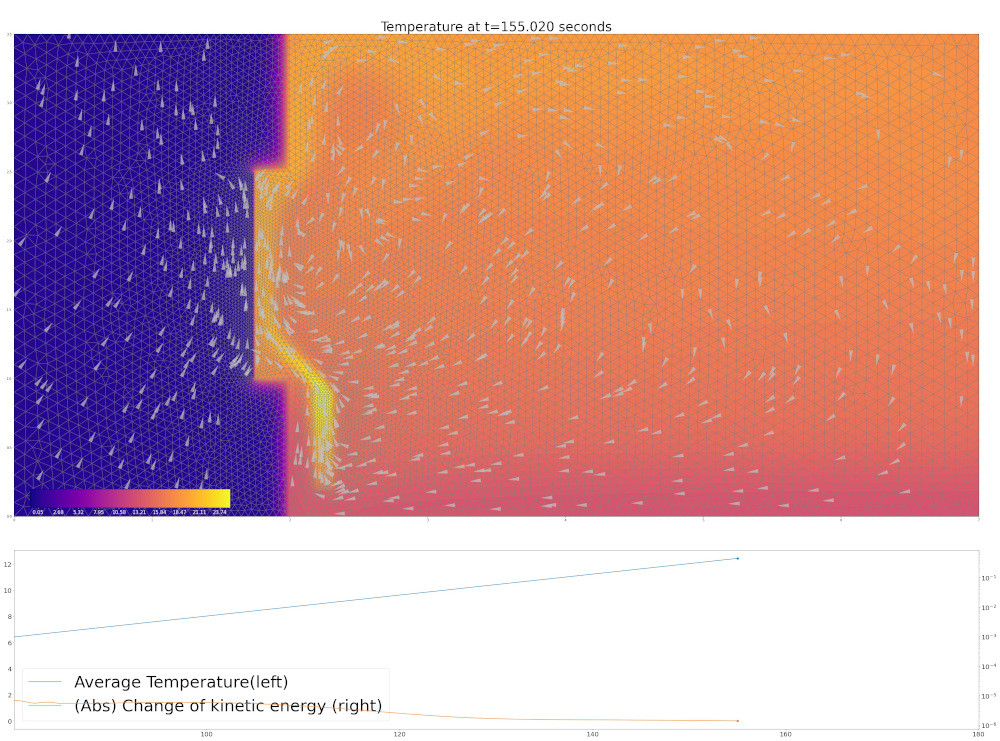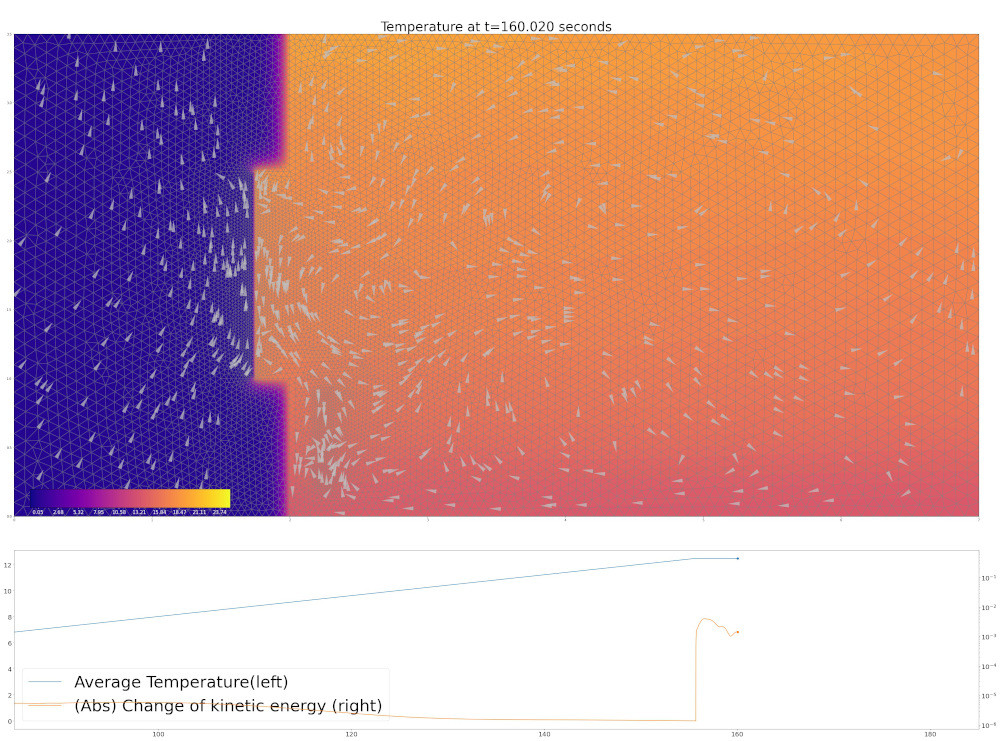I studied the flow fields induced by convective heating in this exact situation for a university project. In fact it was a situation just like Tom's picture. Indeed I think that heating the air near the window causes the greatest heat transfer, i.e. is least efficient, but avoids the very uncomfortable feelings of a cold draught at your feet by reversing the flow field. I confirmed it by simulating the Navier-Stokes equations with Fourier-type heat transfer laws and a linear (Boussinesq) approximation for buoyancy causing convection. A somewhat long video with different scenarios is available here on YouTube. You really do see (in 2D) how the presence of the heater in this configuration fights the natural convection caused by the window which you see when the heating power is turned off. A heater at the opposite wall would only reinforce the cold-feet airflow field.
If you don't want to watch it then the following pictures give a good idea. The first image shows with the heater on at high power. The second image shows what happens when it is turned off. The small triangles show the direction of the air flow. The left side of the image is the outside (flow direction is opposite because it is being heated.
edit: I would also add that the small ledge over many heaters in Germany will probably reinforce the small circulation loop at the left in Tom's picture, which prevents cold convection currents from directly pouring into the room.


